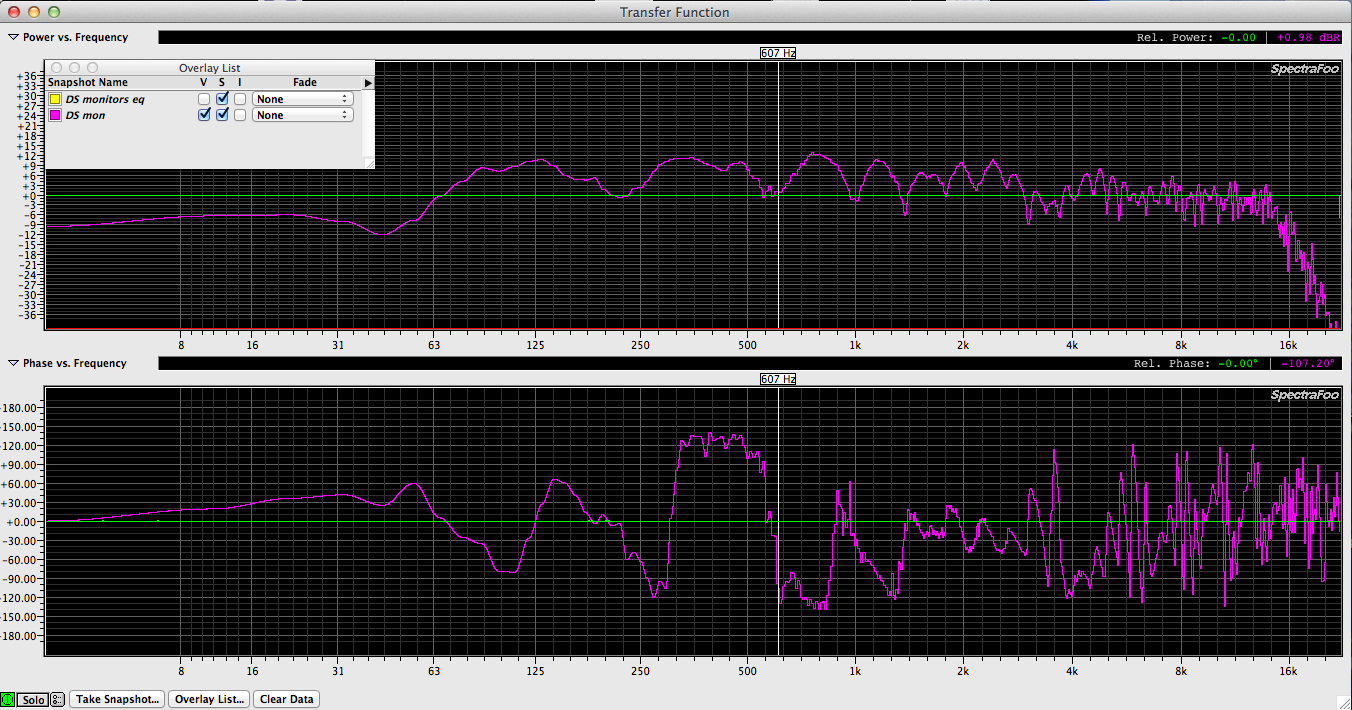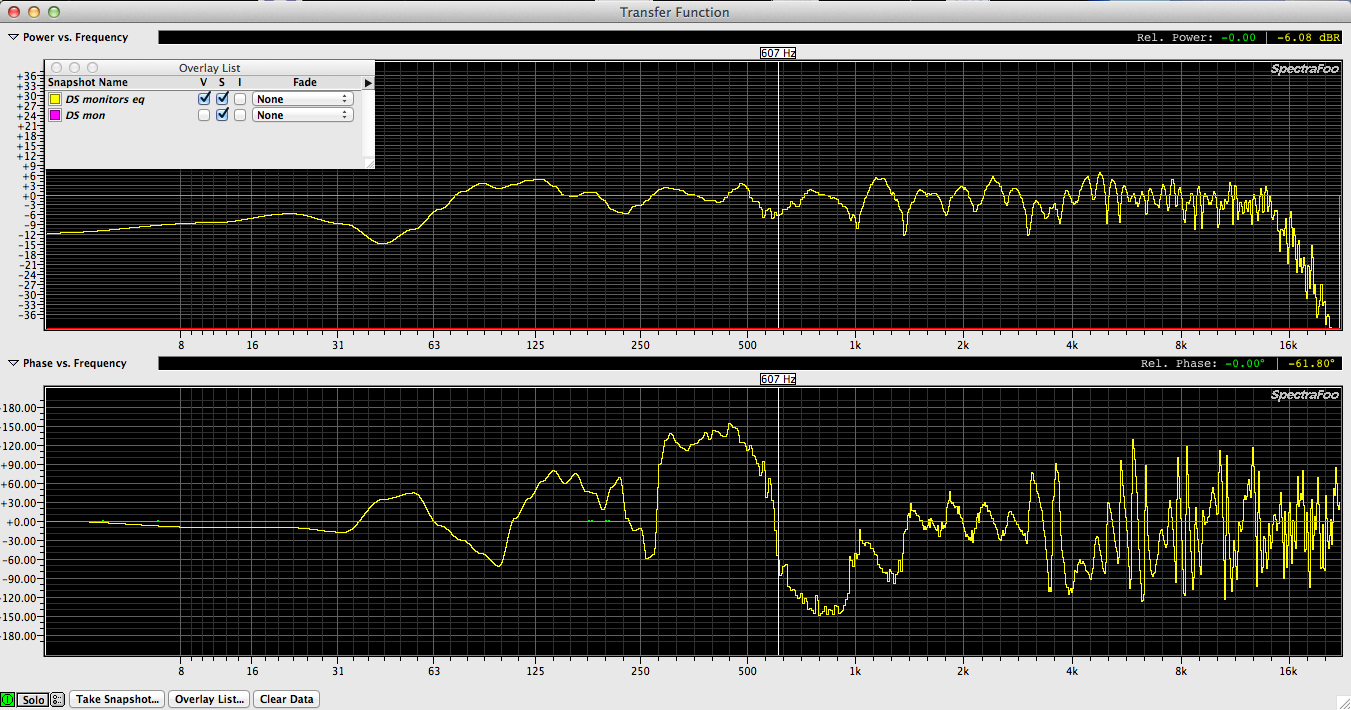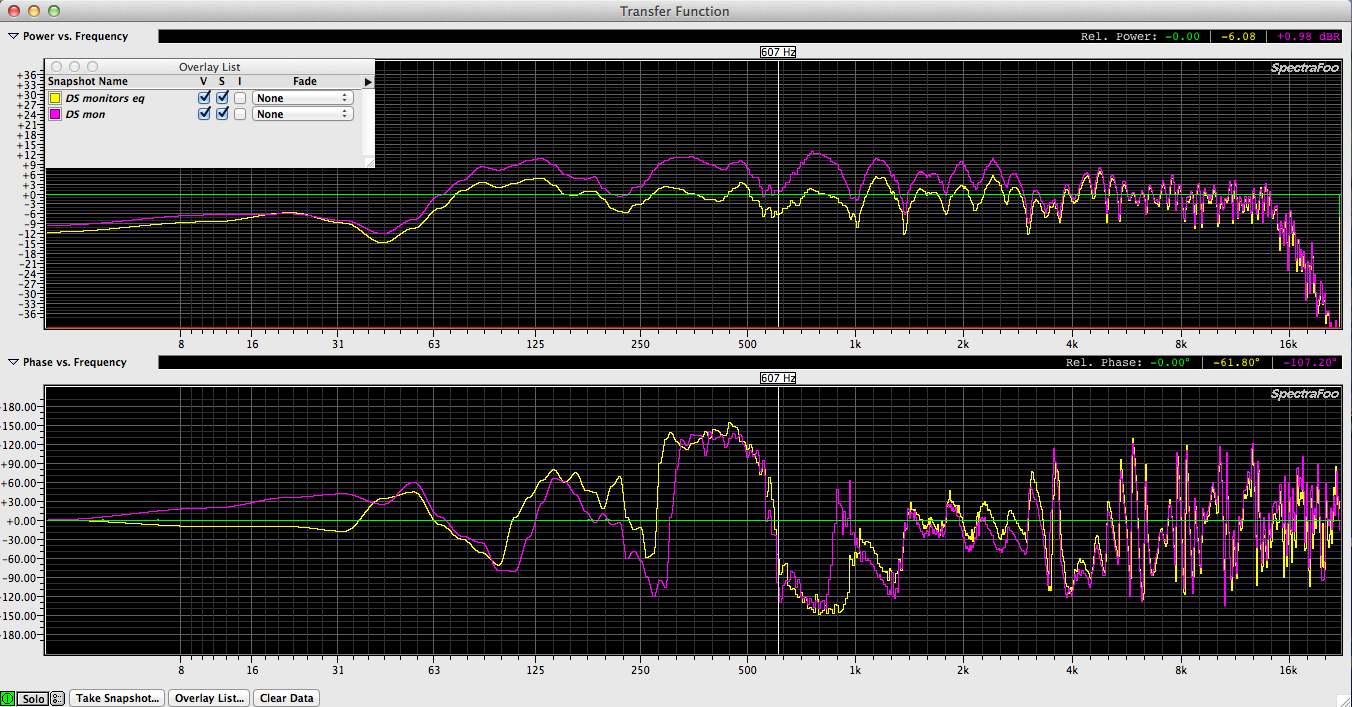A common practice in live audio is to use a pair (or more) of speakers located in the wings to cover the stage for monitors. What is wrong with this? An better question is, “what isn’t wrong with this practice”?
The results of a recent measurement session at the Winspear Opera House for a dance production are a good example of how cross firing speakers interact causing massive comb filtering:
Comb filtering results from combing multiple signals (audio &/or acoustic) that are out of time. The amount of comb filtering & the frequency at which the filtering starts is determined by the amount of time offset.
The measurements also reveal how placing speakers near a boundary (the floor, a wall, the ceiling) creates excessive low & low mid frequency content which causes an unnatural balance for the performers & any audience members who are able to hear the stage monitors.
A speaker that measures flat when in free space will have extra low & low mid content when placed against or near a boundary. If a speaker / speakers is placed near multiple boundaries, the low / low mid content will be increased further. The same is true of mic position. think of mics & speakers as cousins that both have the same grand parents. Mics are small & capture sound. Speakers are large & reproduce sound. Both respond to the laws of physics in the same manner.
Measurement rig: Spectra Foo Complete
Mic: Earthworks TC30k
I/O: Metric Halo ULN2
Source: (2) Renkus Heinz two way self powered speakers (15″ woofer)
Ideally you want to measure speakers one at a time but for this purpose, I knew the speakers were going to be cross firing so I purposely measured both speakers at the same time from a central location.
So the first thing you always do is take a time measurement to let your measurement app figure which signal is early & which one is late. In this case I’m measuring the internal signal generator in Spectra Foo Complete again an Earthworks TC30K so obviously the signal from the mic will be last.
Here is what you get when you measurement (2) sources that aren’t time aligned (impossible with cross firing deck speakers). This graph is called an “impulse response”. It is a glimpse into the time domain. If there was only (1) speaker & there were no immediate boundaries to cause secondary reflections, you would see one excitation. Instead with (2) speakers cross firing & not evenly spaced, you see (2). If the mic were placed exactly between them, you would see a single excitation but it would be more pronounced.
Here is what the resultant response looks like. Note all the comb filtering (extreme dips) across the entire audio range.
That is caused by having (2) speakers out of time with each other firing at each other. A sort of worst case scenario. Of special interest is the excessive low & low mid information. Roughly 9db at the peaks between 63hz and 2.5khz. Trust me. You don’t want 9db of extra low and low mid energy on stage. That sort of spectral tilt at the state will easily overpower the mains for those up close to the stage.

This is a capture of how the response looked once we did some parametric eq correction. Note that the comb filter is still present. I knew going into this measurement that I was dealing with a poor acoustic condition that wouldn’t change. Some times you pick your battles & this time I was just hoping to reduce the LF build up on stage.

Overlay the two graphs & you get this:

After these measurements were made we copied the same eq & pasted it onto the upstage pair of speakers. In theory, turning on (4) speakers created more low and low mid content even though each pair of speakers was flattened out a bit but I didn’t get a chance to measure with all (4) speakers on at the same time. I know that they would of interacted with each other so the comb filtering would of been worse.
The moral of the story is that you want to avoid cross firing speakers when at all possible. By raising speakers off the floor you avoid excessive low / low mid build up. Anything to avoid (2) speakers aimed right at each other & outputting the same exact signal. But it’s a common practice to put speakers offstage firing at each other so it’s good to understand what to expect, what can be done to minimize the affects & to know when to take dinner…


